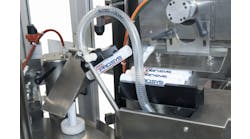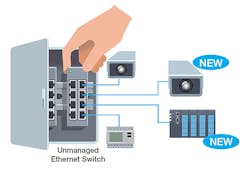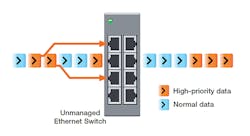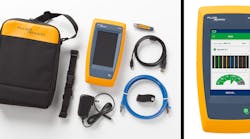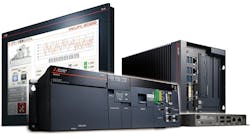Latest from Learning Center
For a single automated production line, you may only need one or two Ethernet network nodes to enable connectivity so that operators in the control center can monitor the system status and respond to incidents.
Now, imagine the headache of connecting a growing number of devices from multiple systems into a single network. Every challenge is multiplied—an unenviable reality that industrial automation engineers, tasked with integrating several automated production lines across different factors, have to deal with.
So how do you ensure all of these devices and Ethernet nodes are connected and that operators receive the critical data they need to maintain continuous operations?
One solution is to deploy more managed Ethernet switches which would allow you to manage your network transmissions and set related parameters according to your needs. Although managed Ethernet switches offer greater control and granularity, maintaining multiple managed switches takes a lot of time and effort.
What’s more, increasing the number of manageable network nodes may increase configuration and maintenance efforts. Therefore, careful network planning and design are essential so that you don’t outgrow your network too quickly.
Alternatively, using unmanaged switches at some network nodes may also improve overall network efficiency and reduce maintenance efforts.
Learn more about Moxa's network solutions.
Key Criteria for Choosing Unmanaged Ethernet Switches
Industrial operators often regard unmanaged Ethernet switches as simply network hubs for connecting field data to IP networks. When industrial operations are up and running, operators may even forget that they have unmanaged Ethernet switches on their networks.
However, when more and more devices are connected to generate business insights, industrial operators may become overwhelmed by unexpected network instability. To satisfy increasing complex network requirements, unmanaged Ethernet switches need additional features.
Here are some key criteria to help you choose which unmanaged switches best suit your IIoT applications.
Key Question:
How can you squeeze an unmanaged Ethernet switch into a space-limited control cabinet that is already filled with multiple industrial devices, and still make it easy for engineers to check device and network status during operations and maintenance?
1. Plan for Expansion
The basic requirement for ensuring your network can support a growing number of connected devices is to use unmanaged switches that have a sufficient number of ports and enough bandwidth for high volumes of data. Unmanaged switches are usually installed in space-limited cabinets so using a compact yet high port density solution can also save you trouble on future expansion.
Another major consideration is network speed and transmission distance. Today, there are various types of data, such as video streaming, that use a lot of bandwidth and affect overall transmission speed. Unmanaged switches with Gigabit ports or fiber ports can ensure sufficient network speed for data uplinks, now and in the future.
2. Prioritize Packets at Each Node
Quality of Service (QoS) is a common function used to ensure that critical data is always sent with high priority. Without QoS, critical data may be delayed during transmission if the network is congested. QoS is usually supported by managed switches or certain controlling equipment, such as PLC devices, but is rarely seen on unmanaged switches. With growing demand on network nodes to transmit multiple data types from field sites, it seems reasonable to also have this function on unmanaged switches to ensure that critical data can be transmitted in time without spending extra effort and money to deploy managed switches at every node.
When choosing unmanaged switches, check if they have QoS or similar functions that can prioritize critical data control so that you can keep your network simple and avoid spending too much time and effort on operating managed switches with unnecessary functions.
3. Verify Reliability for Any Environment
Choosing unmanaged switches that have industry certifications for your specific application requirements is the simplest way to verify reliability. However, not all industrial applications require certifications.
Nonetheless, two commonly seen environmental conditions you should be aware of are extreme temperatures and high electromagnetic interference. Unmanaged switches featuring wide operating temperature and redundant power inputs can ensure your network operation stays up and running under harsh conditions. In the event of an emergency, such as a power or port failure during operation, the unmanaged switches should also be able to send alerts to operators so that they can respond immediately.
Using the three aforementioned criteria to evaluate your options can help you find the right unmanaged switches for your industrial applications. To address the needs of rapidly expanding industrial networks, Moxa has developed a new series of industrial unmanaged Ethernet switches—EDS-2000-EL Series and EDS-2000-ML Series—that provides an extra-small footprint and reliability, easy deployment, and flexibility for a variety of industrial applications.








